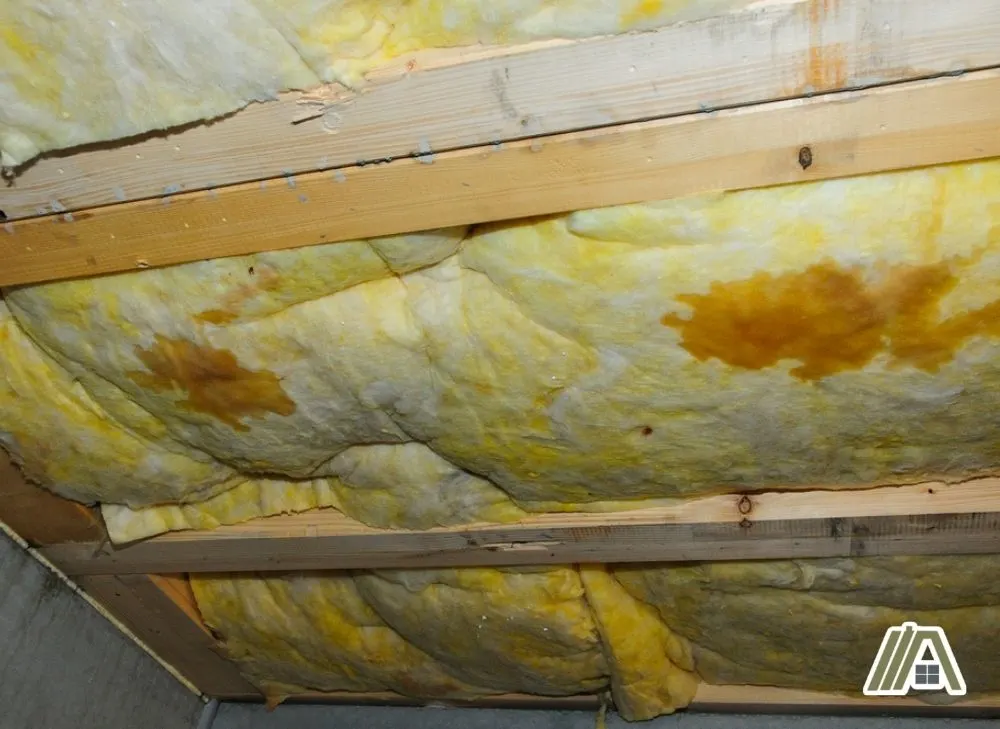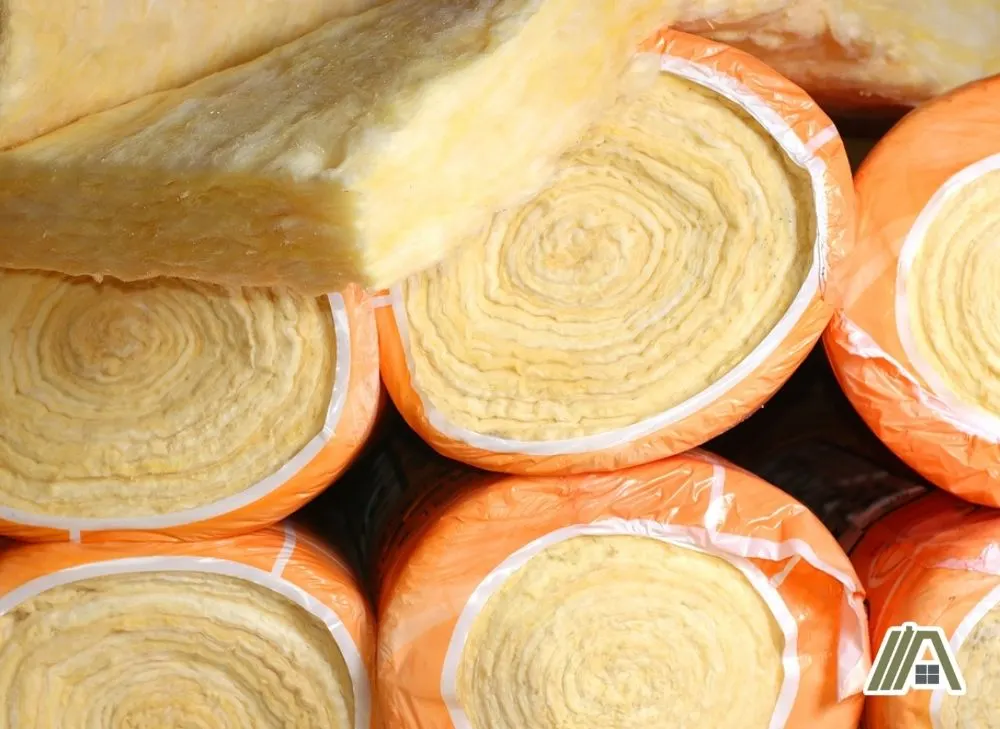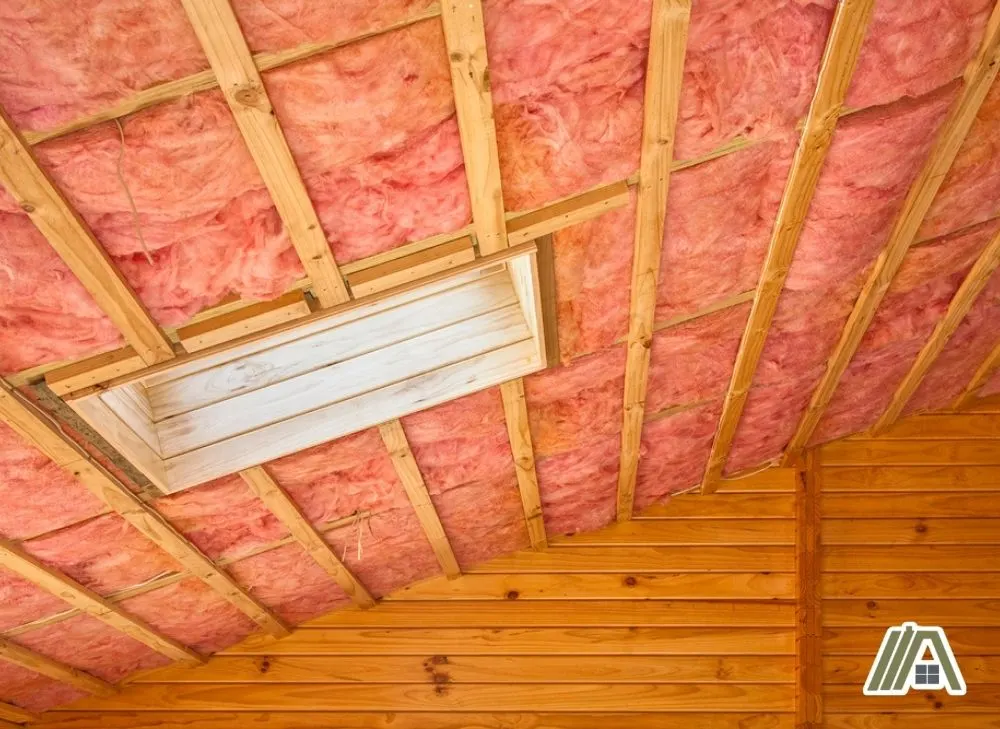Insulation is not a cheap installation in your home. Unfortunately, it is relatively vulnerable to getting wet because of its location in the home.
While wet insulation isn’t good and must be addressed, it also doesn’t necessarily represent needing to spend hours on removal and hundreds on replacement. There are situations in which it can be dried out and reused. But there are also factors that would make reuse unwise, even if the insulation was dried out.

Wet insulation can be reused after drying only if it was wet by clean water, it has fully dried out, there is no mold/bacterial growth, and it wasn’t compressed. These factors are influenced by how wet it got, the type of insulation, where it is located, and how long it took to be found and dried.
It Is Possible to Reuse Insulation Once Dried
Insulation should regain its full ability (or near full ability) to insulate your home, but only once it has been dried. This is because water is a conductor.
Normally, the air pockets in insulation trap the air that is trying to move through it, keeping it inside the home (or out, depending on the location and difference in temperatures).
If insulation gets wet, water fills the air pockets between the fibers or particles, and it loses its ability to slow the transfer of heat. In fact, wet insulation is often as effective as no insulation.
If you know the insulation has been wet before you install it, you have to let it dry before putting it in the walls and ceiling.
Sealing wet insulation into your wall or ceiling might prevent it from drying at all, and it can also cause issues with the structural materials as well.
Of course, insulation can get wet after installation, which can be trickier to dry out, but not impossible.
Factors Affecting the Reusability
Beyond the qualifier of being dry, there are other factors that can influence whether or not the insulation can be reused.
How Wet Did the Insulation Get?
Exactly how much moisture the insulation was exposed to can make a difference.

A sprinkling of rain on the way to the construction site or a slow drip from a leaking duct means that the insulation is not going to be as wet. It will dry faster and suffer less from its exposure to this moisture.
If the insulation is subjected to flooding and is submerged for some period of time, or it’s in an attic with a bathroom fan terminal vent (illegal), you probably won’t be able to reuse it.
In such cases, there are questions about whether it will really dry all the way through (can depend on insulation type), how long it will take to dry (time for degradation and microorganism growth), and the chance that it was compressed.
What Type of Insulation Is It?
The type of insulation that is used is relevant because some materials are more vulnerable to moisture than others, and some will dry faster than others.
Loose fiber insulations of materials like fiberglass and cellulose are greatly impacted by exposure to moisture. They have a relatively low density, so they have a lot of air pockets that can be with the water.
Rock wool also comes in loose fiber form, but it isn’t as problematic if it gets wet. Yes, it can really soak up the water and take a long time to dry, but this is less risky because it is inorganic (I will expand on this in the next section).
Spray foam insulation is water-resistant and can handle exposure to moisture better than most other insulations. That being said, if your spray foam insulation gets wet, it should still be dried because water sitting on the spray foam can cause it to degrade.
Insulation in the form of batts tends to be better at resisting water and can endure encountering more moisture than loose-fill.
However, if it becomes soaked, it will have a harder time drying than loose-fill because it cannot be spread out or manipulated as much to expose the deeper layers of the material.
If your batt insulation gets wet, you will most likely need to replace it.

Did It Have a Chance to Grow Mold/Bacteria?
The danger with insulation that stays wet for a long time is the opportunity for mold and other potentially harmful microorganisms to grow. How long it takes to dry is not always directly related to mold and bacterial growth, but it is a pretty good indicator.
As noted above, loose-fill rock wool is not as problematic as loose-fill fiberglass or cellulose when it comes to the growth of microorganisms. This is because rock wool is made of raw non-organic materials, so it doesn’t offer a food source for mold or bacteria to feed and grow on.
Spray foam insulation is not conducive to mold or bacteria growth either.
If the conditions are right, however, mold can start growing in cellulose or fiberglass insulation within around 24-48 hours, so it is very important to address wet insulation as quickly as possible.
The problem is that if your insulation gets wet while inside the wall or ceiling, it is most likely to go unnoticed for a long period of time, providing ample chance for mold and/or bacteria to grow.
Walls, for example, show no signs of being wet until the water settles in the bottom of the insulation and starts to damage the wall there. Furthermore, insulation that is lightly saturated throughout most likely won’t damage the wall, even if it can grow mold or bacteria.
If your insulation is visibly moldy, rotting, or won’t stop smelling, then you cannot reuse it once it is dry.
Was It Compressed?
When the house I grew up in was built, I watched my dad install insulation, and I always wanted to touch and push on it (it was so pink and fluffy!), but my dad always stopped me.

This was partly because touching fiberglass insulation without gloves can be harmful and partly because it would be bad for the insulation.
Any type of compression, such as occurs when the insulation gets wet and heavy, causes the particles or fibers to bind together and form clumps, which reduces the effectiveness of the insulation.
The clumping and binding close the air pockets that are meant to hold and prevent the air from passing through. Even after drying the insulation and removing water from these pockets, the water could have caused the fibers to come together, closing up the pockets.
The longer the insulation is wet, or the more soaked it is, the more likely it will become compressed and unusable.
What Made It Wet?
The type of moisture that makes the insulation wet is very important.
If the insulation is made wet by rain water (which is relatively clean), then there is a better chance that the insulation can be dried and used.
In general, the dirtier the source of moisture that makes the insulation wet, the less likely the insulation can be used because the more dirty the source, the more likely that bacteria or mold will grow/fester in the insulation (this will be discussed further below).
If your insulation was left in a stagnant puddle at a construction site, most likely that insulation will be no good for two reasons: it’s been wet too long and/or it is extremely dirty.
In addition, if your insulation gets wet from non-water liquids (oils, gas, paint, etc.), the odds are that the insulation cannot be reused.
This is because of the difficulty of removing the liquid and because of the potential dangers of having any such residue left over that is then sealed in your walls.
Sources
https://myenergymonster.com/ma/can-insulation-get-wet/
https://energyattic.com/does-wet-insulation-need-to-be-replaced/#h-fiberglass-batts
